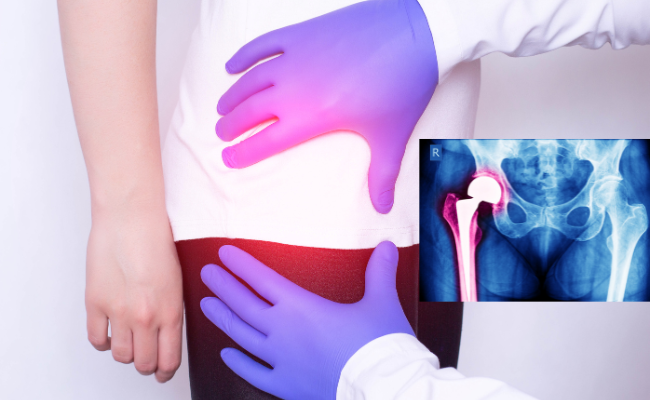How to Treat Hip Fracture?
- December 01, 2023
- No Comments

What is a Hip Fracture?
A hip fracture, a serious orthopedic injury affecting the upper part of the femur, is particularly common among the elderly due to age-related bone weakening. However, such fractures can also result from trauma or conditions like osteoporosis. The hip joint's vital role in facilitating essential movements makes fractures in this area particularly impactful, ranging from stable cases to complex ones requiring surgical intervention.
Typically associated with intense pain, hip fractures often demand immediate surgical attention, with total hip replacement as a potential post-fracture necessity. Engaging in physical therapy is instrumental in enhancing the prognosis for individuals coping with the consequences of hip fractures, aiding in recovery and improving overall outcomes.
Why is Treating a Hip Fracture Important?
Treating a hip fracture is of paramount importance due to the potential consequences associated with this type of injury. The hip joint plays a pivotal role in our ability to maintain an active and independent lifestyle. A fracture in this area can result in severe pain, loss of function, and a considerable impact on the overall quality of life.
One of the primary concerns with untreated hip fractures is the potential for complications. Immobility resulting from a hip fracture can lead to various issues, including blood clots, pneumonia, and pressure sores. In the elderly population, these complications can be particularly severe and contribute to a decline in overall health and well-being.
How to Treat a Hip Fracture?
The treatment of a hip fracture typically involves a multidisciplinary approach, encompassing both surgical and non-surgical interventions. The choice of treatment depends on factors such as the type and severity of the fracture, the patient's overall health, and individual preferences. Here's a more in-depth exploration of the key components of hip fracture treatment:
Surgical Intervention:
- Internal Fixation: This involves the use of screws, rods, or plates to stabilize the fractured bone and facilitate proper healing. Internal fixation is often employed for stable fractures or when the fracture fragments can be aligned without the need for major reconstruction.
- Hip Replacement: In cases where the hip joint is severely damaged or arthritis is present, a hip replacement surgery may be recommended. This involves replacing the damaged joint with an artificial implant to restore function and alleviate pain.
Non-Surgical Management:
- Pain Management: Controlling pain is a critical aspect of hip fracture treatment. Medications, such as pain relievers and anti-inflammatories, are often prescribed to manage pain effectively.
- Rehabilitation: Physical therapy plays a vital role in the recovery process. Rehabilitation exercises are designed to improve strength, flexibility, and mobility. Depending on the individual's condition, rehabilitation may start soon after surgery or as soon as the patient's condition allows.
Treatment Solutions for Hip Fractures:
- Minimally invasive surgical techniques, such as arthroscopy, reduce trauma to surrounding tissues, leading to faster recovery times and less postoperative pain. This approach is particularly beneficial for certain types of hip fractures.
- Encouraging early movement and weight-bearing as tolerated can prevent complications such as muscle atrophy and joint stiffness. This proactive approach supports a quicker return to normal activities.
- Physical therapy not only aids in regaining strength and flexibility but also helps individuals regain confidence in their ability to move independently. A well-structured rehabilitation program is tailored to the specific needs and capabilities of the patient.
- Adequate nutrition is crucial for bone healing. Providing nutritional support, including sufficient intake of calcium and vitamin D, can contribute to a more robust recovery process. This is especially relevant in older individuals who may have nutritional deficiencies.
- Implementing measures to prevent future falls is a crucial aspect of managing hip fractures, especially in the elderly population. This may involve home modifications, balance exercises, and medication reviews to minimize the risk of recurrent fractures.
- Collaborative care involving orthopedic surgeons, physical therapists, pain management specialists, and other healthcare professionals ensures a comprehensive and holistic approach to treatment. This multidisciplinary approach addresses not only the fracture itself but also the broader aspects of the patient's well-being.
Benefits of Treating Hip Fractures:
- Improved Quality of Life: Addressing a hip fracture promptly and effectively can significantly improve an individual's overall quality of life. The restoration of mobility and independence contributes to a sense of well-being and self-efficacy.
- Reduced Complications: Timely treatment reduces the risk of complications such as blood clots, infections, and respiratory issues. By actively managing these risks, healthcare providers can contribute to a smoother recovery process.
- Prevention of Long-Term Disability: Proper management helps prevent long-term disability associated with hip fractures. Early interventions, including surgery and rehabilitation, aim to restore functionality and minimize the long-term impact on daily activities.
- Enhanced Functional Outcomes: Through a combination of surgical interventions and rehabilitation, individuals can achieve better functional outcomes. Regaining strength, flexibility, and mobility allows for a more active and engaged lifestyle.
- Lower Healthcare Costs: A well-managed hip fracture can lead to lower healthcare costs in the long run. By minimizing the need for prolonged hospital stays, additional treatments, and extensive rehabilitation, effective treatment strategies contribute to cost-effective healthcare delivery.
Comments (0)